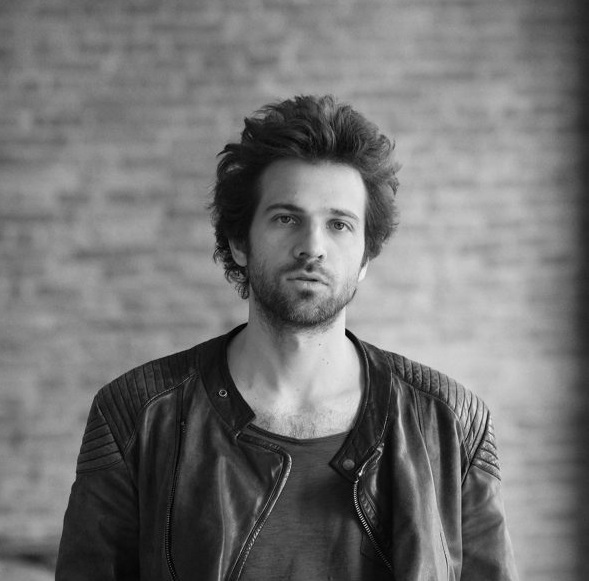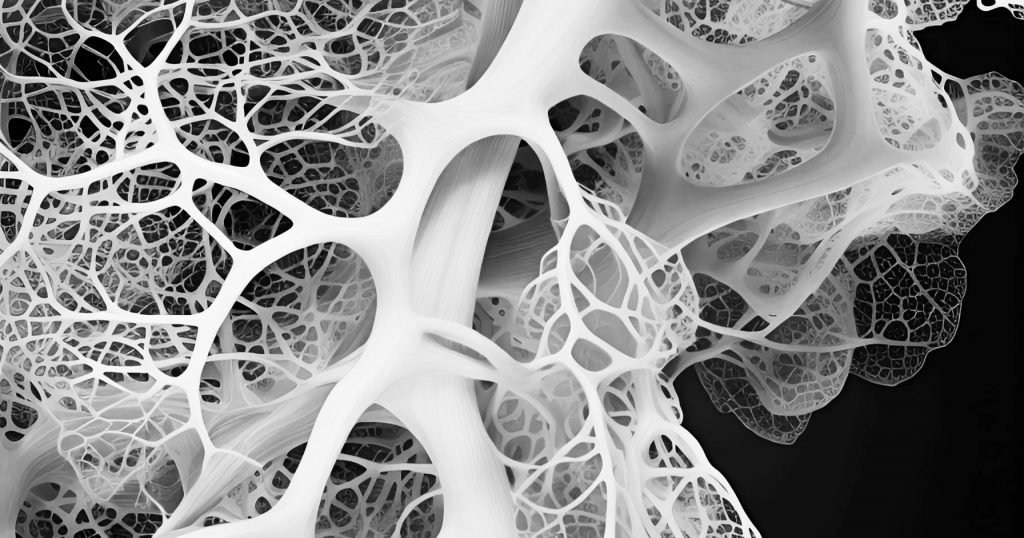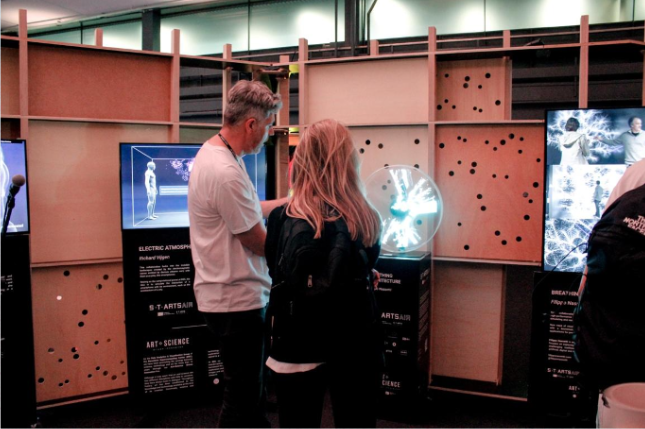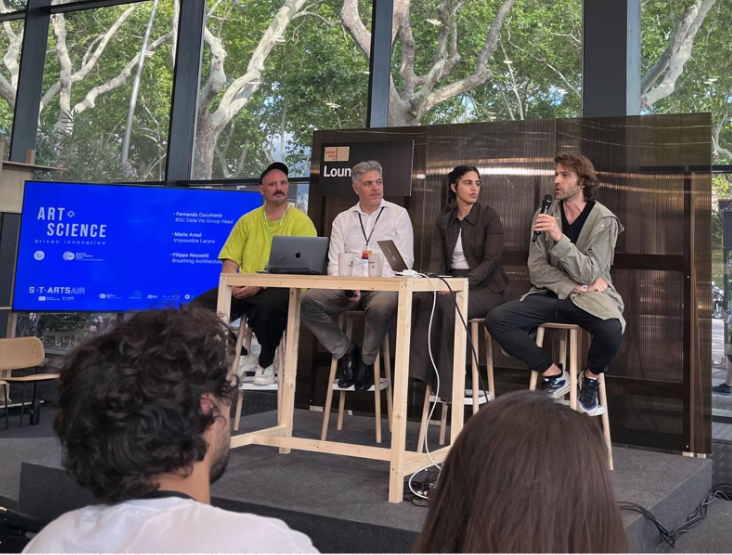MEET THE ARTISTS: Filippo Nassetti
Breathing architecture

A radical unbalance exists between the general awareness of the visible aspects of the human body, and what happens underneath the skin.
Cultures tend to expose the features of the anatomical surface: colour, shape, size, mass, all these categories work very well to describe what is visible, which over the centuries has been the subject of countless artistic explorations.
Under the skin – a profound darkness, an enigmatic world, a domain mostly relegated to the realm of medicine. A place that is observed only when things don’t work as they should, when confronted with malfunctions in the usual operations of the body.
Technological evolution, in particular the emergence of tools that relate to visualisation and mapping, expand the human knowledge of the world, by gaining a different point of view, a new perspective beyond a previous limit.
The creation of a digital twin of the human body, employing complex simulations powered by High-Performance Computing (HPC), marks the forefront of medical advancement today. As this technology grants the ability to explore the body from within, a wide territory for artistic exploration emerges, where anatomies can be described in a different way, seeking new forms of knowledge and beauty.
Breathing Architecture attempts to tackle this opportunity, by proposing a collaboration between artists and scientists, as part of the EU S+T+ARTS AIR Residencies program. The core team of the project is composed by artist Filippo Nassetti, scientists at the Barcelona Supercomputing Center and High-Performance Computing Center Stuttgart, mentored by the Fundación Épica La Fura dels Baus, RCR Arquitectes and In4Art.
Breathing Architecture proposes to reframe the internal structures of the body as artistic subjects, by developing new visual languages and aesthetics, powered by advanced technology, expanding on the strictly medical, functional lenses through which they are often looked. By selecting and structuring information, beauty becomes functional in allowing to interpret, remember and connect.
As Leonardo da Vinci stated, “all our knowledge has its origins in our perceptions”, emphasizing the profound impact of visual representation on our understanding of the human form.

Focusing specifically on the respiratory system, the main aim of Breathing Architecture is to collaboratively experiment with modelling, numerical simulations and visualisation techniques powered by High Performance Computing.
On one hand, the project investigates the possibility of creating immersive experiences, where a general audience is able to gather a deeper, intuitive, pre-logical understanding of the human body, specifically of its complex and vital respiratory structures, seen through the lenses of contemporary, advanced technology.
On the other, it explores the potential for multidisciplinary collaboration to drive scientific and technological innovation. This involves investigating novel approaches to modelling breathing architectures composed of complex microscale structures, with the aim of solving simulations within an HPC framework.
Additionally, Breathing Architecture researches the possibility of abstracting principles and models from the organisation, functioning and morphology of the different parts of the respiratory system, that can inform a new, biomimetic approach to tackle the challenge of designing synthetic breathing architectures, for innovative applications in the design of products and the built environment.
Breathing architecture: reflection and thoughts on the project by Filippo Nassetti
Among the main learnings from this phase:
- Clearer understanding of the way scientists operate, things to keep in mind in order to establish a successful collaboration
- Technical understanding of the datasets being used, and the workflows that allow to use them for artistic purposes
- Expansion of the own artistic agenda to the domain of the space inside the body
- Expansion of the own artistic agenda to a number of technologies for immersive experience
Collaboration with AIR partners:
Filippo Nassetti: “My AIR Residency has been primarily a collaboration with BSC. I also had several rich exchanges with other AIR partners.”
“With In4Art, we had sessions focused on the concept and narrative of the project, where I was able to consider different perspectives and potential directions for development. They were also very generous in creating opportunities to connect with their network.”
“At HLRS/MSC, I had the opportunity to test the visualisation of some of the models I developed at BSC within their immersive CAVE environment.With PINA/HEKA, I was introduced to the techniques of spatial sound, and we experimented to integrate them within the spatial environments I have designed.”



KNOWLEDGE TRANSFER
Event 1 details
The artist offered a seminar of the work developed in the project to ELEM Biotech company. ELEM is a spin-off from Barcelona Supercomputing Center (BSC) where the technology Alya and the bio-simulation project was born. It creates populations of virtual humans to predict the outcome of pharmacological and medical device therapeutics. These models evolve into virtual populations mirroring the diversity and pathologies of society. Pharmaceutical or Medtech companies, and CROs use their supercomputer-based in-silico trials to test products from discovery to pre-clinical to clinical phases.
In this context, we saw a great opportunity to showcase the results of Filippo’s residency at BSC. The presentation had a significant impact on the company members, who were highly engaged and impressed by the stunning visualizations of the results. We discussed the possibility of applying a similar methodology to the modelling and visualisation of the heart and vessels in the circulatory system, and the possible artistic interpretation of the datasets and simulations that ELEM is developing.
The event took the form of a seminar, where Filippo Nassetti presented the work developed during the project. The aim was to explore potential synergies with other scientific challenges the company is currently addressing, as a cardiovascular system siumations.
- Event Name: Seminar Visualization Respiratory System Simulations
- Date: June 12, 2024
- Location: ELEM Biotech (Av Laietana 26 , 08003, Barcelona)

Event 2 Details
The presentation of the work in progress of the research at the Sónar+D festival invited participants to see the perspectives of the artists and the scientists working together on a joint effort. Centered around the art+science collaboration more than in the actual outcome of the research, the activity presented the opportunities that can open and a methodology for approaching complex problems.
The show consisted of three pieces displaying the current state of the project, and a joint presentation of the artists in one of the conference stages of the festival. Filippo Nassetti’s contribution to the booth was a pseudo-holographic monitor (made with a LED-enabled ventilator) that showcased the videos and animations of the breathing data visualizations. The presentation session later focused on the application possibilities and future of the technology.
- Event Name: Sónar+D hall
- Date: 13th to 15th of June, 2024
- Location: Fira de Montjuic, Barcelona



This project is funded by the European Union from call CNECT/2022/3482066 – Art and the digital: Unleashing creativity for European industry, regions, and society under grant agreement LC-01984767
